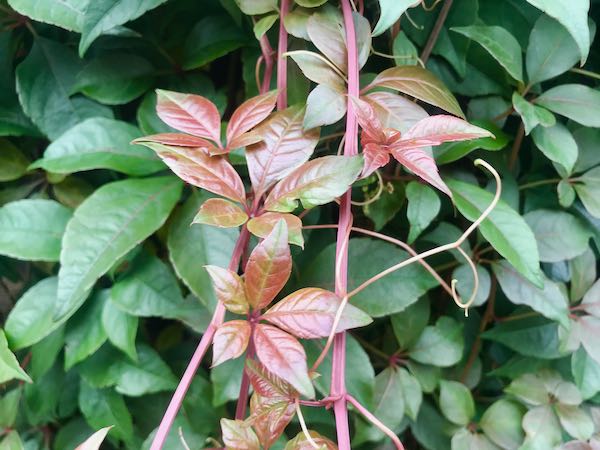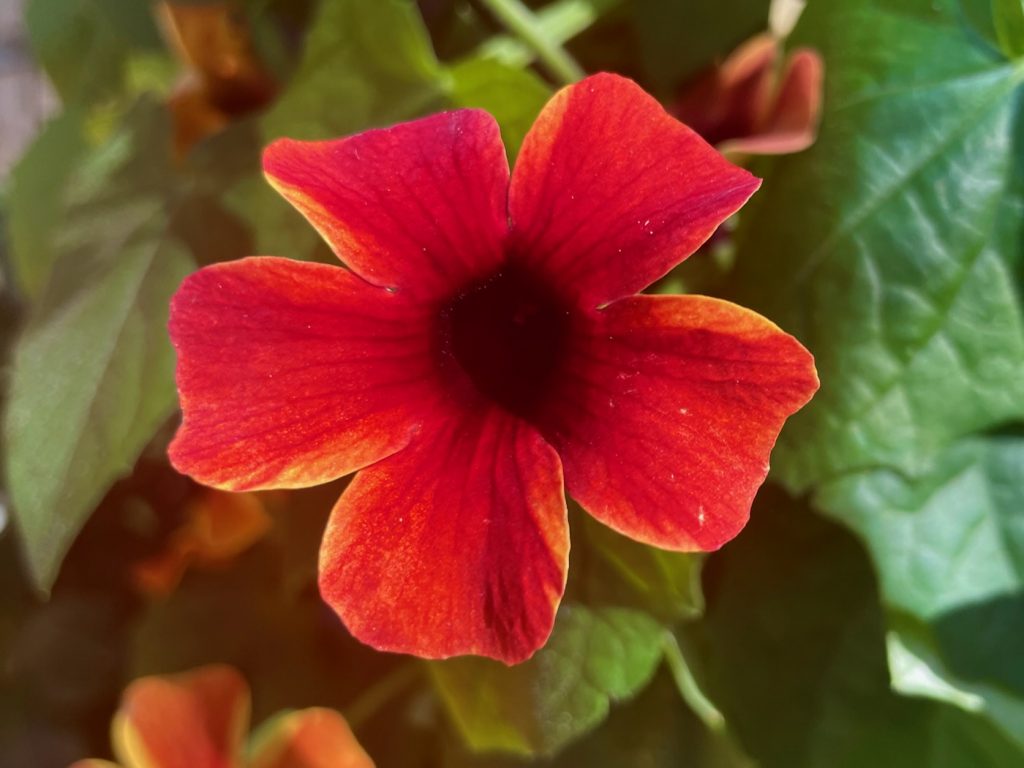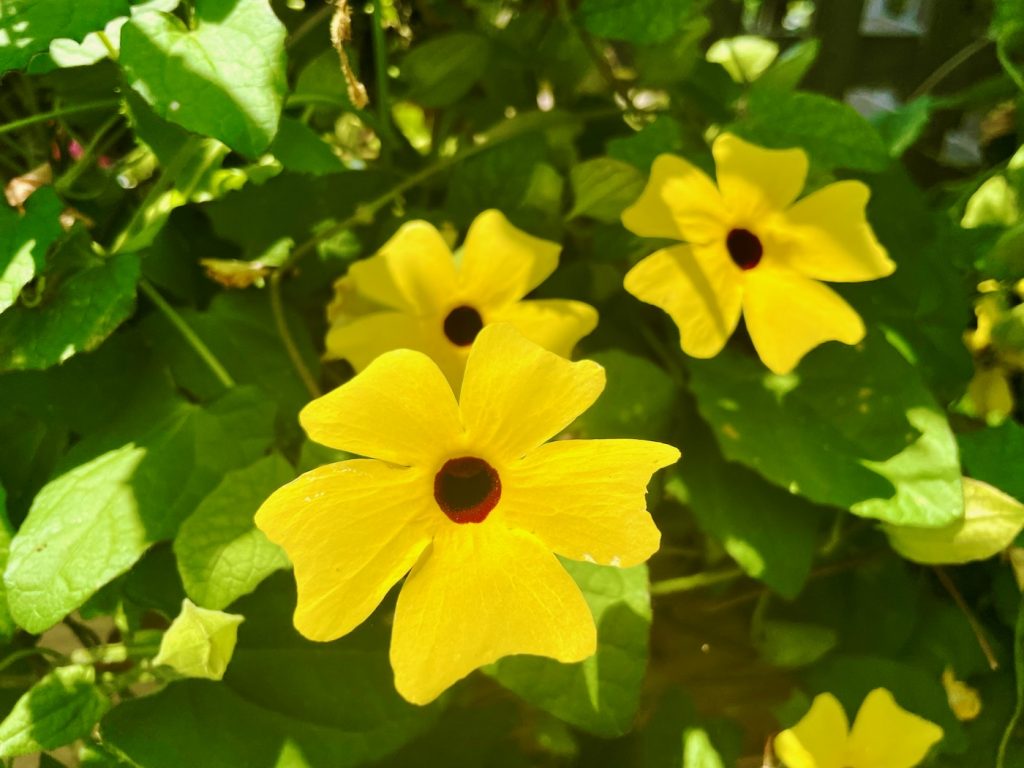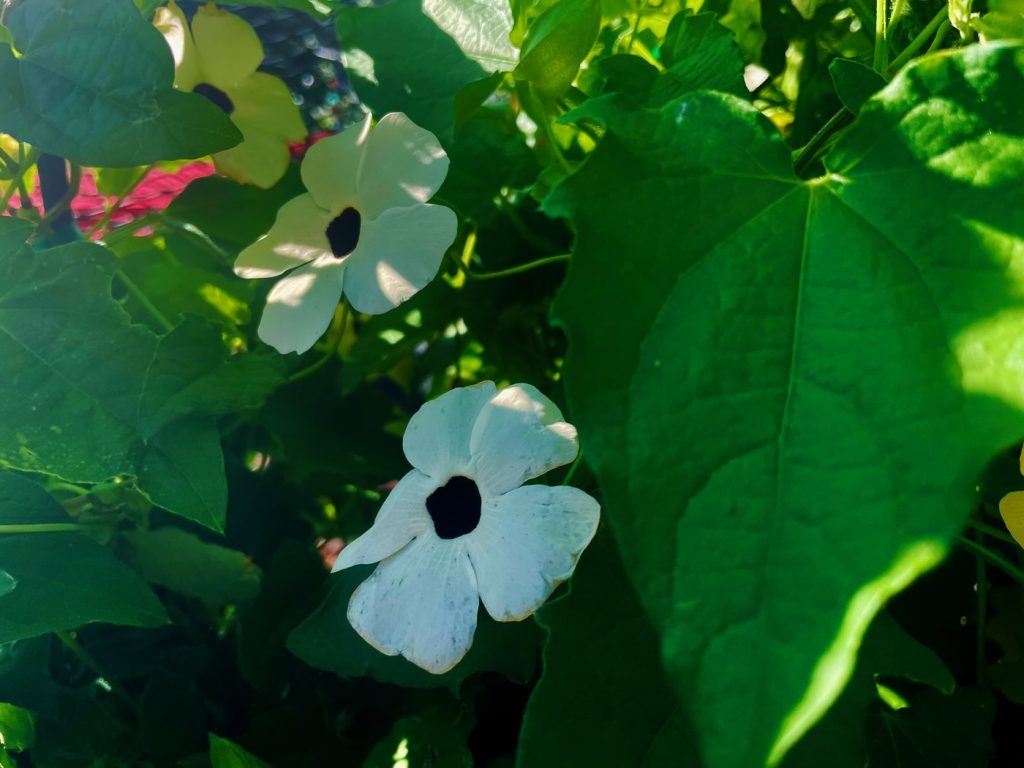Parthenocissus quinquefolia is from the Vitaceae family of plants. It is a flowering vine native to North America. The name “Parthenocissus” means “virgin ivy” in Greek and “quinquefolia” means “five-leaved”. They also call it Woodbine, Virgin Creeper, Virginia Creeper, Victoria Creeper, Five-leaved Ivy, or Five-Finger.
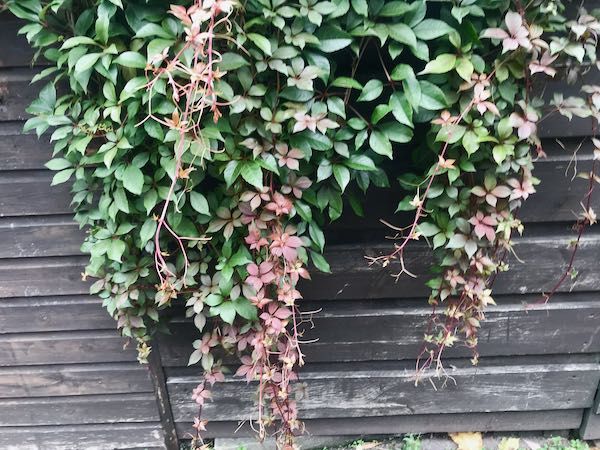
It grows to 30m or 100ft and its foliage is palmately compounded with five leaflets. The leaves have toothed margins and start as purple in spring and then change to green and later in autumn they turn purple and red. The flower is greenish-white and grows in clusters. Parthenocissus quinquefolia flowers in late spring and thereafter, it produces purple berries. The berries are toxic as they contain oxalic acid. However, birds consume it for food without any issues.
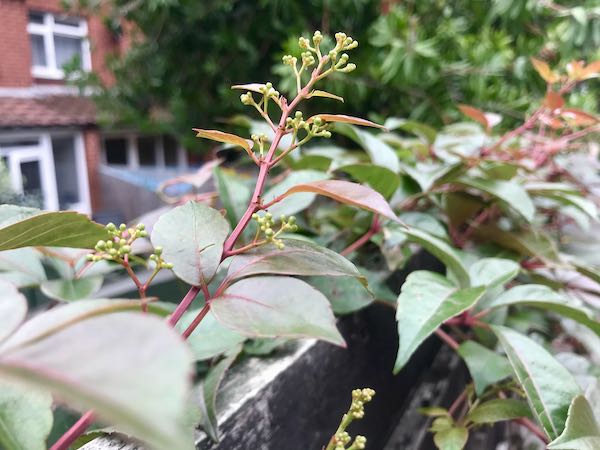
How to grow Parthenocissus quinquefolia:
Sunlight: Parthenocissus quinquefolia can be grown in both full sun and partial shade. It is adaptable to different light conditions but performs best when provided with some shade during the hottest part of the day, especially in regions with intense summer heat.
Soil: Plant Parthenocissus quinquefolia in average to medium moisture soil that is well-drained. It can tolerate a range of soil types, including clay, loam, and sandy soils. Ensuring proper drainage is important to prevent waterlogging, which can lead to root rot.
Growth Habit: Parthenocissus quinquefolia is a vigorous grower and can quickly cover large areas. Consider its growth habit and provide adequate space for it to spread, whether it’s being trained on a trellis or allowed to climb on structures or trees.
Disease and Pest Resistance: Parthenocissus quinquefolia is generally resistant to diseases and pests. However, like many plants, it can still be susceptible to certain issues. Watch out for mildews (such as powdery mildew), cankers, leaf spots, beetles, and leafhoppers. Regularly inspect the plant for any signs of damage or disease, and take appropriate action if necessary, such as applying suitable fungicides or insecticides.
Parthenocissus quinquefolia is known to be deer tolerant. While it is not completely immune to deer browsing, the vine’s foliage is generally less appealing to deer compared to other plants. This makes it a good choice for landscapes where deer may be present.
When growing Parthenocissus quinquefolia, it’s important to provide some support or structure for it to climb, such as a trellis, fence, or wall. Regular pruning may be required to control its growth and maintain its desired shape. Prune during late winter or early spring, before new growth begins. This will help keep the vine in check and encourage healthier, more manageable growth.
By following these guidelines and providing suitable growing conditions, you can enjoy the beauty of Parthenocissus quinquefolia as it climbs and spreads, creating a lush and vibrant display in your garden.
